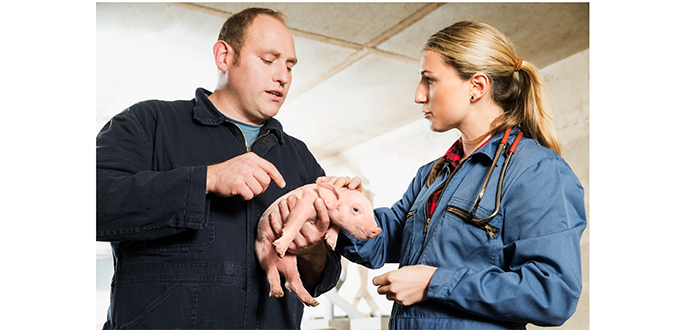Non-BPS applicants can now apply for Annual Health and Welfare Review, part of the Animal Health and Welfare Pathway.
Under the scheme, pig farmers in England receive £684 for a veterinary review of their herd’s health, biosecurity measures and medicine usage, and PRRS testing. The vet then produces a written report with test results, other findings and follow-up actions.
Initially, the review was only open to farmers who were eligible for BPS, in order to keep the administration as straightforward as possible.
But the scheme is now open to all eligible livestock keepers, including non-BPS registered farmers. The criteria now states that, to be eligible, you must have 51 or more pigs, the livestock must be registered in England and you need to be responsible for their welfare.
Your business must have a single business identifier (SBI) linked to a county parish holding (CPH) number registered in England.
About the review
The review is flexible. You and the vet can decide what the health and welfare priorities are for the farm and focus on these.
The review will need to include the required testing of livestock and the vet will discuss the test results with you. They’ll recommend actions you can take to improve health and welfare based on testing and their time on the farm.
The review requires:
- testing for the endemic disease or condition of the livestock type you’re having reviewed to recommended standards – BVD in dairy and beef cattle, effectiveness of worming treatments in sheep, porcine reproductive and respiratory syndrome (PRRS) in pigs.
- the vet advising on the health and welfare of the livestock – including issues such as lameness, body conditioning or mobility scoring
- a written report and summary prepared by the vet with agreed recommendations and actions to improve the livestock’s health and welfare
- You to share some information with Defra and RPA
Optional areas may include a check of your biosecurity measures and advice on improving them and recommendations about medicines used on your farm including antibiotics and vaccinations.
Once the vet has completed the review, they’ll provide you with a report that includes:
- endemic disease or condition test results from the laboratory
- advice or suggested species-specific health and welfare actions
- other review findings – for example, biosecurity recommendations and medicine usage
- the agreed priority recommendations and actions for you to improve the health and welfare of your livestock.




